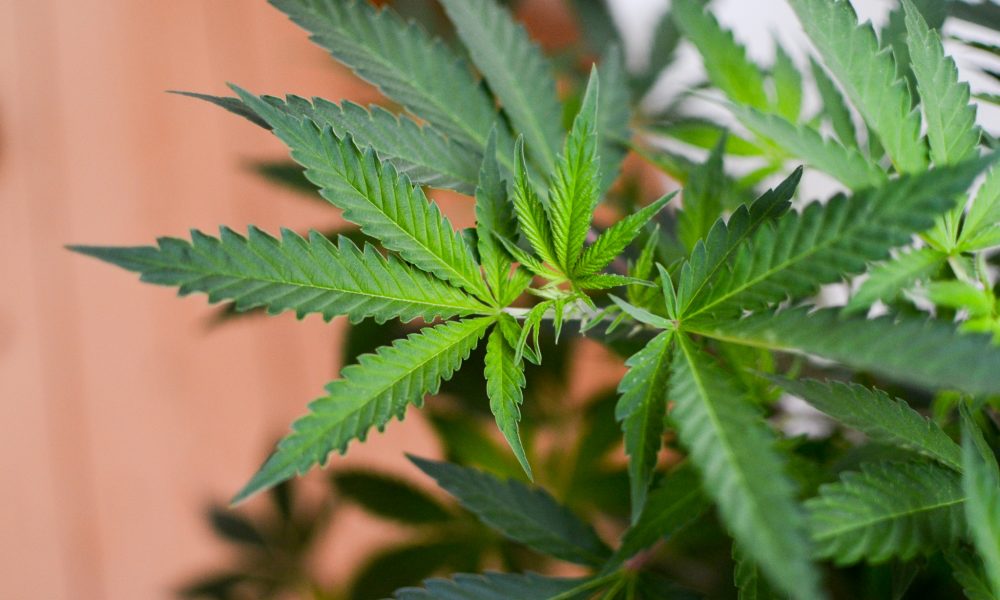Marijuana regulators from across the country discussed the state of social equity in legal cannabis last week, part of the third meeting of a National Academies commission focused on changes amid the ongoing legalization movement.
The latest two-day meeting of the Committee on Public Health Consequences of Changes in the Cannabis Policy Landscape, which follows a pair of earlier gatherings, focused mostly on social equity and justice, including how marijuana regulatory models “have influenced employment, tax revenues, economic indicators, criminal justice interactions, the unregulated market, and access to prevention and treatment resources for cannabis use disorder.” It featured an array of individual speakers as well as panels around specific topic areas.
One panel, for example, “State Government Strategies for Social Justice in Cannabis Legalization,” brought together representatives from state-level regulatory agencies in New York, California, New Jersey, Missouri and Illinois, who discussed efforts aimed at ensuring the emerging multibillion-dollar industry benefits small, community-based businesses and people most harmed by cannabis prohibition.
Damian Fagan, chief equity officer for New York State’s Office of Cannabis Management (OCM), began by acknowledging the context for social equity, noting that especially in New York, the history of marijuana enforcement had affected millions, bringing harsh penalties and disproportionately affecting people of color.
“You have a state with probably, you know, one of the harshest histories of prohibition in the country,” Fagan said: “stop and frisk, Rockefeller drug laws, 1.2 million arrests over 40 years, disparate arrest rates—more so than many other states.”
“If you were Black in New York,” he added, “you were 17 times more likely to get a cannabis arrest” than a white person.
That politically and emotionally charged background, along with New York’s vast legacy marijuana market, Fagan said, is “bumping up against this multibillion-dollar economic opportunity that now everyone wants a piece of.”
Fagan’s presentation linked historical examples to current marijuana policy, noting that whereas alcohol temperance movements in the state were partly grounded in progressive efforts “to emancipate Black communities from the excesses of predatory capitalism,” lawmakers in Albany wrote a cannabis framework “that prioritizes small businesses—community-based businesses that are owned and operated by people from those communities.”
To do so, the state has included automatic expungement provisions for past cannabis crimes. It has also directed 40 percent of state revenue into a reinvestment fund aimed at disproportionately affected communities, priority licensing, incubators for small businesses and a variety of “wraparound support services,” Fagan noted, that are designed to increase opportunities for equity businesses to enter—and succeed in—New York’s eventually lucrative legal market.
Officials designed the state’s regulatory system not just to prioritize economic development among historically marginalized communities, Fagan added, but also “so they’re playing a role in creating what this legal industry is gonna look like.”
Held on the first of two days of sessions last week, the state-level panel followed talks from cannabis justice and equity advocates, including Jason Ortiz of the Last Prisoner Project, which focuses on legal relief around criminal convictions, and Shaleen Title, an early Massachusetts marijuana regulator who now leads the cannabis policy think tank Parabola Center.
The state talk was followed by a roundtable of local regulators also tasked with equity efforts, including from the city of Los Angeles and the Michigan cities of Pontiac and Grand Rapids, who spoke to how local programs can encourage equity business applicants, mitigate corporate dominance and ensure marijuana advertising doesn’t target minority populations.
Other panels during the National Academies of Sciences, Engineering and Medicine (NASEM) commission’s latest meeting focused on the harms of cannabis policy as well as how public health strategies can balance risks and benefits of marijuana use and support people with cannabis use disorder.
Eugene Hillsman, deputy director of equity and inclusion at California’s Department of Cannabis Control (DCC), noted during the state-level panel that the norm for equity in state cannabis laws has changed as more states have legalized. California was the first to include decriminalization and expungement provisions, he noted—provisions that were later replicated and built on by other states.
California also shifted its expungement process early on from one that required individuals to file petitions to a process that put the burden on courts to identify and automatically expunge the records, Hillsman said, calling it “incredibly important” to “reduce the burden on individuals to have their condition removed.” That issue, too, has become crucial in statehouse debates on legalization across the country.
California provides eligible equity businesses with technical support and fee relief, Hillsman said, for example allowing some retailers to keep a portion of the excise tax they collect or qualify for a $10,000 tax credit through the state’s Franchise Tax Board. He also pointed to a $200 million commitment by California to fund local nonprofits and health departments, including for projects like mental health and substance use disorder treatment, job placement and legal services.
Missouri’s marijuana social equity efforts “don’t go quite as far” as New York and California, said Abigail Vivas, chief equity officer at Missouri’s Division of Cannabis Regulation, though the state does put some cannabis revenue toward state expungement efforts, and “we do have a social equity program through the microbusiness program.”
Microbusiness licenses, the details of which vary from state to state, have become a centrist compromise in some states, such as in a new Virginia legalization bill, where limited small business licenses are designed to prioritize groups like veterans, farmers, people from low-income areas and communities that experienced disproportionate marijuana criminal enforcement during prohibition.
Thanks to a ballot initiative that Vivas helped champion, Missouri’s constitution requires a plan to encourage ownership and employment in the marijuana industry by people from disproportionately impacted or economically distressed areas.
“We have a fast and furious timeline of implementation from the passage of adult use in the fall of 2022,” she said. “We started sales in February of this year, and we issued our first microbusiness licenses in October.”
She said state regulators are “still in these formative phases of exploring what other options we have for providing assistance and support to our microbusiness licensees.”
Missouri’s criminal expungements also aren’t entirely automatic, Vivas noted.
“Nonviolent misdemeanors were to be expunged by June 8,” she explained, “and the felonies that people requested was by December 8, but if anybody is incarcerated, they have to specifically request for that expungement, or petition for the release from prison. So those things were not automatic.”
Also speaking on the panel was Wesley McWhite, director of diversity and inclusion at the Cannabis Regulatory Commission in New Jersey, which legalized marijuana through a 2022 ballot referendum.
“We don’t like to think of social equity in New Jersey as a program or one single policy,” McWhite said. “We like to think of our policies in New Jersey as frameworks instead of one single policy, and so we embed social equity into our administrative practices, our outreach practices and also into policies that we implement, as well.”
Regulators conduct meetings at least monthly, for example, with stakeholders and advocates, he said, and have a formed a specific legacy workgroup “to develop recommendations to help people currently or formerly operating in the unregulated market transition to the regulated market.”
“While we are seeing great numbers and progress and individuals opening businesses all up and down New Jersey, there are still some very clear barriers to entry into success in this industry,” McWhite said. Those include obstacles at the municipal level, trouble accessing capital and a shortage of appropriately zoned real estate.
In Illinois, said Erin Johnson, cannabis regulation oversight officer at the Illinois Department of Financial and Professional Regulation (IDFPR), the state “was intentional about creating a social equity program that really worked to repair the harms done by the war on drugs.”
In addition to investing a quarter of its marijuana tax revenue into the state’s Restore, Reinvest, Renew (R3) program, “which supports civil legal aid, economic development, reentry, violence prevention and youth development,” and expunging more than 800,000 arrest and conviction records, she said, the state currently requires that every new licensee in the industry satisfy social equity criteria.
“Every single license that we have given out has been to someone who has lived in a disproportionately impacted area or is affected in some way, either through arrest or conviction of themselves or a family member,” Johnson said. “So we are proud of the work we’ve done.”
Access to capital remains the biggest obstacle for equity applicants, she added. To address that, the state has provided more than $18 million in direct forgivable loans to licensees and has allocated another $40 million to that fund for the current fiscal year, along with working to provide technical assistance to eligible individuals seeking licenses.
“Help on the front end and on the back end,” Johnson said, noting that the state is working to track the impacts of equity efforts. “We are also currently conducting a disparity study to help us identify additional ways to improve our industry, and that will be out early this year.”
During a Q&A portion of the panel, Hillsman said California is also stepping up tracking systems and “investing in a fair amount of academic research about economic business conditions, both with regard to small businesses and equity businesses,” which could help policymakers make better informed decisions.
Fagan said New York was fortunate to have been able to learn from how other equity programs had fared before creating one of its own.
“New York has the benefit of having watched other states do social equity, seeing what happens, and so we were able to craft a lot of our regulations around some of the predatory ways we saw social equity licensees be taken advantage of,” he said, for example by requiring that designated social equity owners actually have sole control of their businesses.
Fagan pointed to examples of predatory business practices in cities such as Los Angeles and Detroit, but in recent years state-level equity programs have also faced challenges involving business license transfers to non-equity operators and claims of “egregious exploitation” of equity applicants, some of whom allege business partners have cut them out of profits entirely.
The previous meeting of the National Academies Committee on Public Health Consequences of Changes in the Cannabis Policy Landscape, held in November, took up a variety of other regulatory matters around local control, the persistence of the illicit market, gaps that have allowed unregulated businesses to thrive, market trends in countries where cannabis is legal and corporate- and celebrity backing of legal marijuana.
The committee’s first meeting, in September, featured representatives of several federal agencies who weighed in on evolving cannabis policies.
Ultimately, the ad hoc NASEM cannabis committee is expected to “provide recommendations for strengthening a harm reduction approach, which would minimize harms, of various regulatory models, including but not limited to social, employment, education, and health impacts,” according to a NASEM description, and also to issue recommendations on “policy research for the next 5 years.”
Congressional Resolution Urges Equity In Legal Marijuana Markets And Pushes Biden To Advocate For Global Cannabis Reform At UN
Photo courtesy of Philip Steffan.
Read the full article here









